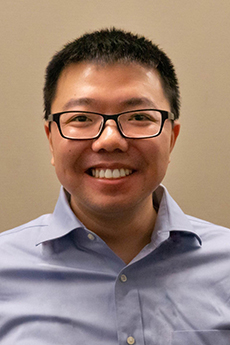For most of us, making an online purchase is a seamless process – we add items to our cart, checkout, and wait patiently for the package to arrive on our doorstep. It’s easy to forget that a package's journey to our doorstep is complex, especially within the “final 50 feet,” the crucial moments when delivery drivers approach their destination. This process involves searching for parking spaces, navigating sidewalks for package pickups and drop-offs, and returning to the parked vehicles. The efficiency of this seemingly small part of the delivery process can significantly impact how quickly and smoothly packages reach our doorsteps.
CEE Professor Zhengtian Xu has been awarded an NSF CAREER Award to support his research innovating system design involved in the “final 50 feet.” The project will conduct economic and system-level analyses to characterize the “final 50 feet” problem in urban environments, identify the key drivers of critical issues, and evaluate the effectiveness of new policies, designs, and operations to address these challenges.
With the explosion of online shopping, the “final 50 feet” has become more critical and challenging than ever. According to an article in the MIT Technology Review, by March 2022, New York City alone saw an astonishing 3.6 million packages delivered daily, roughly one package for every two residents. Delivery drivers face a constant struggle to find parking on crowded urban streets. When no spaces are available, they may spend extensive time cruising for parking, resorting to unauthorized parking spaces or double parking, clogging streets and frustrating other drivers.
This growing bottleneck slows deliveries and disrupts urban neighborhoods. Professor Xu’s project aims to uncover the hidden complexities of the “final 50 feet” and develop novel solutions.
“This CAREER award offers precious opportunities to connect the fundamental physics of transportation systems with practical applications with the exploration of new possibilities and practices in the “final 50 feet” of urban logistics, formulating strategies to leverage their strengths while mitigating their negative impacts on society and daily life.”
As the project’s Principal Investigator, Professor Xu will provide opportunities for local high school and GW undergraduate students to contribute to and learn from this research. His lab plans to continue its tradition of hosting internships for high school students from the School Without Walls, a high school located near GW’s Foggy Bottom campus.
Xu also wants to enhance undergraduate course offerings by introducing engaging out-of-classroom exercise modules that guide students step-by-step in adapting highway engineering methods to address emerging urban mobility issues. “My goal is to impress upon civil engineering students that congestion is not limited to highways but extends to other vital civil infrastructures, such as urban curbs,” he said.
Professor Xu’s team will also collaborate with the District Department of Transportation (DDOT), which pioneers innovative solutions to urban mobility issues throughout D.C. Xu hopes to develop a virtual testbed to simulate curb activities and operations, replicating the system dynamics involving delivery drivers and the general public.
Practical, real-world impact is a priority for Xu with this research. “We strive to develop a suite of models and tools that will be useful to the research community, students, professionals, and public agencies in understanding and harnessing the evolving urban mobility system in the long run,” he concluded.


